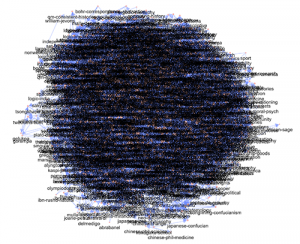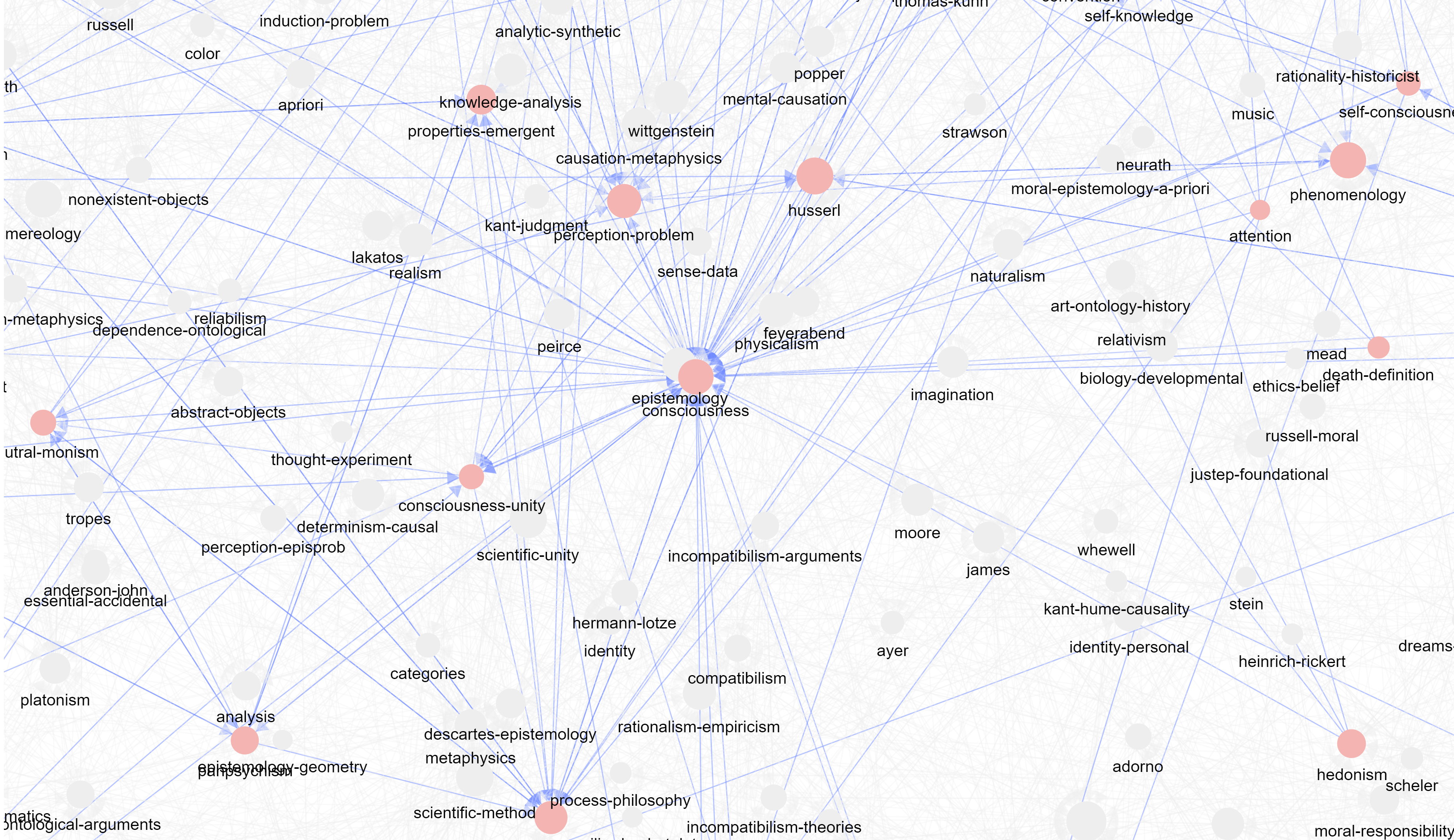New Map of SEP Based on Reciprocated Entries
A new visualization of the Stanford Encyclopedia of Philosophy (SEP) displays the connections between each article and the “related entries” listed at the end of it.
The visualization was created by Moses Boudourides (Northwestern University) and Mark Alfano (Macquarie University).
From a distance it’s a bit hard to read:
But once you zoom in…
and then zoom in some more…
…you can start to see the connections.
And when you click on one of the nodes, all but it and its connected entries fade. Here is a detail from the map for “consciousness”:
You can explore the map yourself here.
Dr. Boudourides describes the project and what can be learned from it here.







There are 1685 nodes (entries) in the full graph. The largest component of reciprocated nodes (pictured here) includes 1223 of them. There are also some smaller reciprocating sub-networks that aren’t connected to the largest reciprocated sub-network.
Two questions that immediately arise when thinking about this:
(1) Why are most but not all links reciprocated? It could just be that new entries don’t automatically get reciprocated back when they are published. In other words, if entry X was published in 2015 and entry Y, which links to X, was published in 2016, then there won’t be an opportunity to link back to Y until X is updated several years later. It could also be that some of the more important entries get linked to but don’t link back. And it could just be that the authors of the different entries disagree about what’s relevant to what. There are likely to be some improvements to the SEP possible based on examining unreciprocated edges.
(2) What are the “islands”? In other words, what is the second-largest reciprocated network, and what topics are addressed in it? We might wonder how, given meaning holism and the relevance of everything to everything else at least indirectly, these islands exist. My guess (which we are going to be checking) is that the islands are associated with aspects of (the history of) philosophy that contemporary Western perspectives tend to ignore or denigrate. So for instance, I hypothesize that one of the islands will be Chinese philosophy, another of the islands will be Indian philosophy, and another of the islands will be Africana philosophy. Feminist philosophy is probably sufficiently mainstream at this point that it won’t be an island, but we’ll have to check and see.